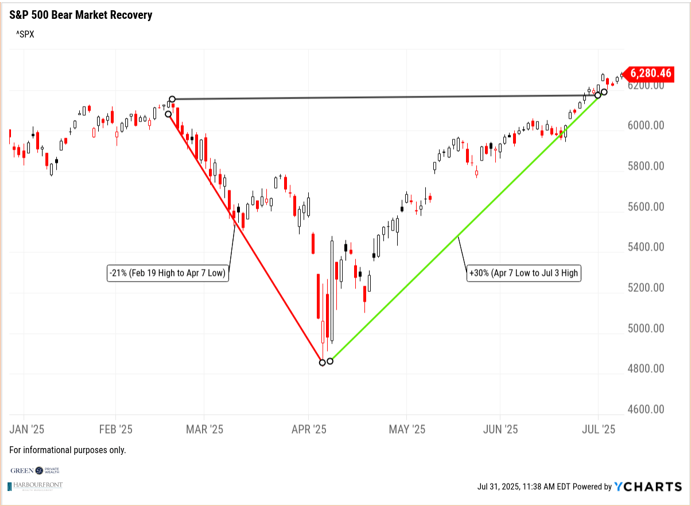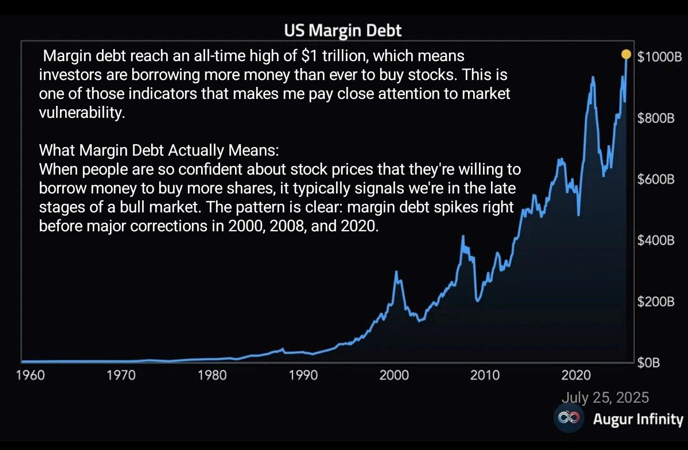Mid-Year Check Up
As we pass the mid point of 2025 I think it is not a stretch to say the markets have been on quite a ride this year. Early optimism turned to sharp pullbacks as the “Liberation Day” tariff announcement on April 2nd sparked widespread pullbacks in Markets across the globe. The S&P 500 officially entered “bear market” territory on April 3rd before making a low on April 7th. This was a 21% drop from the previous all-time high on Feb. 19th. The recovery from this point has been phenomenal. According to Charlie Bilello this is the second fastest recovery since the 1950’s. Only the 1982 drop reached new All-time highs faster which was within 2 months.

What about the future? As you can see in the chart below, many times in history the markets have continued to rally to new highs once the recovery is complete. The momentum tends to carry on over the following 6 months for the strongest rebounds.

What Are We Watching?
As the market continues to perform well even without interest rate cuts, FOMO (Fear of Missing Out) begins to take hold. A recent report shows US Margin Debt at an all-time high. Margin Debt represents money borrowed against stocks to purchase additional stocks. This makes the stock market particularly vulnerable to negative news. If the stock market falls slightly it could cause margin loans to be called which would result in more stocks being sold and a sharp correction could ensue.

As we move into the late stages of summer and early fall there is a high likelihood of a pull back and an opportunity to purchase stocks at lower prices.
On July 29th the Watermark Portfolio Team reduced equity exposure by 5% selling the Fidelity All In One Equity ETF in our accounts over $150,000 and put the proceeds into a short-term bond fund to wait for a pullback. This is one of a few tactical changes they have made to our client portfolios this year. Historically this has lowered volatility while still achieving our long term return goals.
The Takeaway?
Over the long term the stock markets in the US and Canada have been the best place for most people to grow their wealth. The long-term numbers are very impressive but often it is short-term thinking that leads people into underperforming the markets by a wide margin. Chasing performance, selling at the wrong time and trading without a sell discipline are a few things we see individual investors do. By working with a team including a Financial Planner and Portfolio Manager you can benefit from full-time oversight of your investments and tactical adjustments that take advantage of market opportunities whenever they occur.



